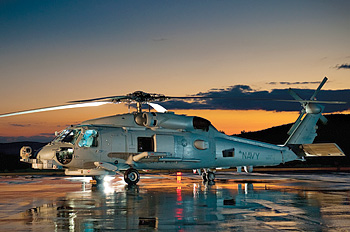INDIAN ARMED FORCES CHIEFS ON
OUR RELENTLESS AND FOCUSED PUBLISHING EFFORTS

SP Guide Publications puts forth a well compiled articulation of issues, pursuits and accomplishments of the Indian Army, over the years

I am confident that SP Guide Publications would continue to inform, inspire and influence.

My compliments to SP Guide Publications for informative and credible reportage on contemporary aerospace issues over the past six decades.
Cover Story
Rejuvenating Naval Air Arm

The coming decades certainly hold enormous promise for substantial growth and empowerment of the Indian Navy’s Fleet Air Arm. With the kind of capabilities on the anvil of induction, it would emerge as a credible force to tackle multi-dimensional challenges of the future.
Visionaries of an Independent India had recognised the importance of maritime power since the very beginning. This recognition became the cornerstone for the pioneering naval planners to formulate and project a force level of 136 ships and submarines, with two aircraft carriers forming integral part of the strategic maritime power of the nation. But even after 60 years of re-christening of the Indian Navy, the first Naval plan paper has remained a pipe dream. Go-stop-go kind of knee-jerk approach has attributed to envisioned maritime capability not being realised even through 11 Five Year plans. However, this millennium has re-emphasised increasing importance of maritime interests to designate it as the Century of the seas. Thus a political consensus has emerged over commensurate and critical capability based augmentation of the Indian Navy, as enshrined into Indian Maritime doctrine, in consonance with the national security imperatives. The first decade of the millennium has witnessed Indian Navy’s modernisation plans gaining positive momentum, deriving optimum benefits from sturdy economic growth, pragmatic and liberalised national security policies.
Induction of INS Vikrant, the former HMS Hermes during 1960s, heralded a paradigm shift in naval warfare by adding a third dimension to it. since then the Fleet Air Arm has steadily grown to emerge as a critical force multiplier for the Indian Navy. In the entire spectrum of naval warfare, viz. surveillance and reconnaissance, identification or engagement, a potent and capable naval air arm, significantly remains a powerful instrument of blue water capability. over the years, Indian Navy’s Fleet Air Arm has acquired not just the airborne assets integral to the fleet, but shore-based naval aircraft to provide a comprehensive force multiplier capability.
After a lapse of nearly two decades of initial arming and consolidation, which was also marred with serious laws, the 1980s came to be known as the golden era of the Fleet Air Arm with wide ranging acquisition of aviation assets. The sea Harrier fighter, reconnaissance and strike (FRS) aircraft was acquired as replacement for the ageing Sea Hawks, bridging the gap in carrier-borne fighter and strike capability. Kamov 25 helicopters were inducted along with the guided-missile destroyer rajput and provided vital anti-submarine and ship strike capability to the fleet at sea. While ASW Sea Kingss were first inducted in 1970s, the modern Sea Kings Mk 42B helicopters with anti-submarine and ship strike capability were inducted in the late 1980s. The IL 38 MR and ASW aircraft were acquired from soviet Union, soon to be followed with TU 142M long-range maritime reconnaissance (LRMR) aircraft joining the aviation assets in the late 1980s. dornier 228 maritime patrol aircraft (MPA) was acquired in the early 1990s, as replacement for French Alizes ASW aircraft. Islander, MR aircraft, the Chetak light utility helicopter (LUH) which still serves the Navy in SAR and anti-submarine attack roles, the Kiran jet trainer, Sea Kings Mk 42 C commando carrier helicopter and the Kamow 25 and Kamov 28 ASW helicopter, were inducted in a phased manner.





